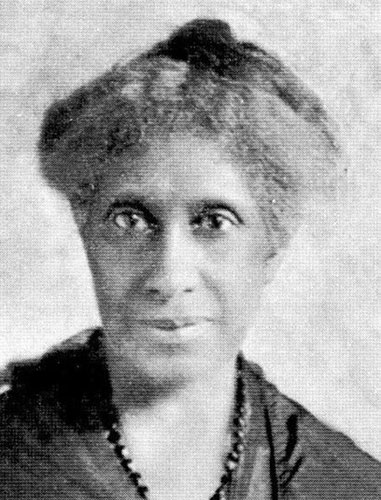A snapshot of prominent African American families, from the early years of Peoria to the present
In 1840, Peoria claimed a population of around 1,400 citizens, which included just eight African Americans. One was a boy named Thomas Harris Lindsay, born in McConnellsburg, Pennsylvania, ten years earlier. Thomas came to Peoria at the age of seven and was one of the city’s original settlers. He worked hard and earned money to free many slaves from Kentucky—including the woman who would become his wife, Sophia Jane Lindsay.
Thomas Harris Lindsay features prominently in Dr. Romeo Garrett’s book, The Negro In Peoria, a chronicle of early African American history in Peoria. Dr. Garrett calls him the best-known black man in Peoria, who “fought militantly for the freedom and rights of African Americans.” Lindsay owned vast amounts of property as one of Peoria’s first market masters—a highly respected position for anyone, but especially for a black man during this dangerous time period.
Thomas and Sophia Lindsay were determined to give their children a good education at a time when Peoria’s schools were still segregated, sending their daughter Elizabeth to Princeton, Illinois, to attend secondary school and high school. Upon Elizabeth’s graduation in 1873, she delivered an ambitious commencement address that was reprinted in newspapers across Illinois. “Give the African race 200 years of freedom, respect and education instead of 200 years of slavery, prejudice and ignorance,” she declared, “and they will attain to an equal point of civilization and intelligence with that of any other people.” Elizabeth Lindsay Davis went on to become a teacher, a prominent social activist, and the famed author of Lifting As They Climb, a history of black women’s clubs.

Elizabeth Lindsay Davis
The Lindsays’ second daughter, Julia, was born in Peoria in 1858 and became the city’s first chiropodist, or foot doctor. She married Henry Clay Gibson, who had attended high school in Princeton with Elizabeth; he went on to become Peoria’s first black elected official. Julia Lindsay Gibson was a charter member of the Peoria Negro Women’s Mutual Aid Club, organized in 1899 by her sister Elizabeth. Many of the Lindsay family’s proud descendants still live in Peoria today.
Connecting to Our Heritage
Angela Allen Henry has the publishing business in her blood. As managing editor of The Traveler Weekly, the city’s longest-running black newspaper, she continues to tell the stories of Peoria’s African American families. Angela’s parents, Elise (Ford) Allen and the late James O. Allen Sr., were entrepreneurs who owned their own printing business before founding the newspaper in 1966.
With The Traveler Weekly, Elise Allen became one of the first African American women in Illinois to publish a newspaper—and she remains its owner and publisher. Elise lived in Peoria and attended Franklin and Peoria Central High School; her husband James came from southern Illinois; and the couple married in Tazewell County before settling in Peoria.
Elise’s parents were Florence (Harrison) Ford, a well-known seamstress, and Dr. Cecil Bruce Ford, Peoria’s first black dentist. Dr. Cecil Ford graduated from Meharry Medical College in Nashville, Tennessee—the first medical school in the post-Civil War South for African American students. Dr. Ford graduated in 1918 and opened a successful office in downtown Peoria.
Florence’s parents (Elise’s grandparents and Angela’s great-grandparents) were Henry Harrison and Elizabeth “Lizzie” (Roberts) Harrison. Henry and Lizzie are listed in census records and Peoria City Directories as married, having six children and living at 1215 Second Street as early as 1900. Henry worked a variety of occupations over the years, serving as an elevator operator, laundry man and later, a shoeshiner inside the Hotel Fey in downtown Peoria. He also owned a family business with his son at one time. In addition, Henry and Lizzie Harrison were neighbors of the very first black doctor in Peoria, Dr. James H. Shepperd.

Henry Harrison with son Ben
A Heartwarming Letter
On February 10, 1915, Henry Harrison received an eloquent and heartwarming letter from their friend and neighbor. In its three pages, Dr. James Shepperd expresses sentiments for the loss of Henry’s loving and beautiful wife, Lizzie:
“She was an ideal neighbor and friend, one whose everyday life [and] Christian attitude could be copied with envy…God was her dependence and ideal, and Heaven her eternal goal.
While her voice will not be heard within the confines of your walls, her Spirit will not cease to hover over you all, by day or night. She will expect to meet you all in the realms of heavenly bliss.”
Lizzie left behind their six children to Henry, who passed away at the age of 65 in 1923, still working downtown at Hotel Fey. Today, Elise Allen’s house is mere blocks away from where the past generation’s home once stood on Second Street.
By sharing the stories of these precious souls from the past, Elise and her daughter, Angela Allen Henry, educate, inspire and inform new generations of Peorians, allowing all of us to join together in celebrating our rich heritage. iBi


